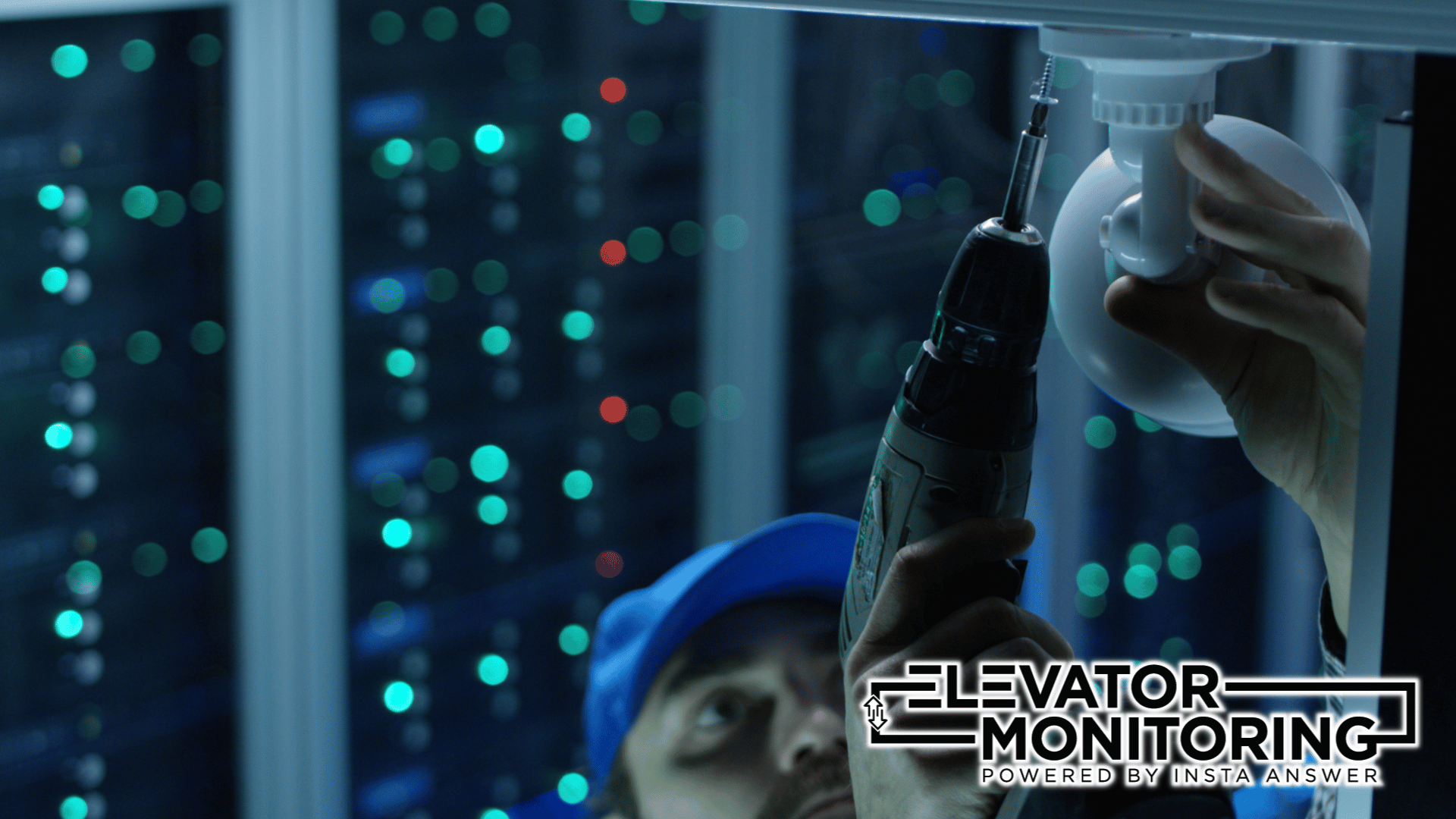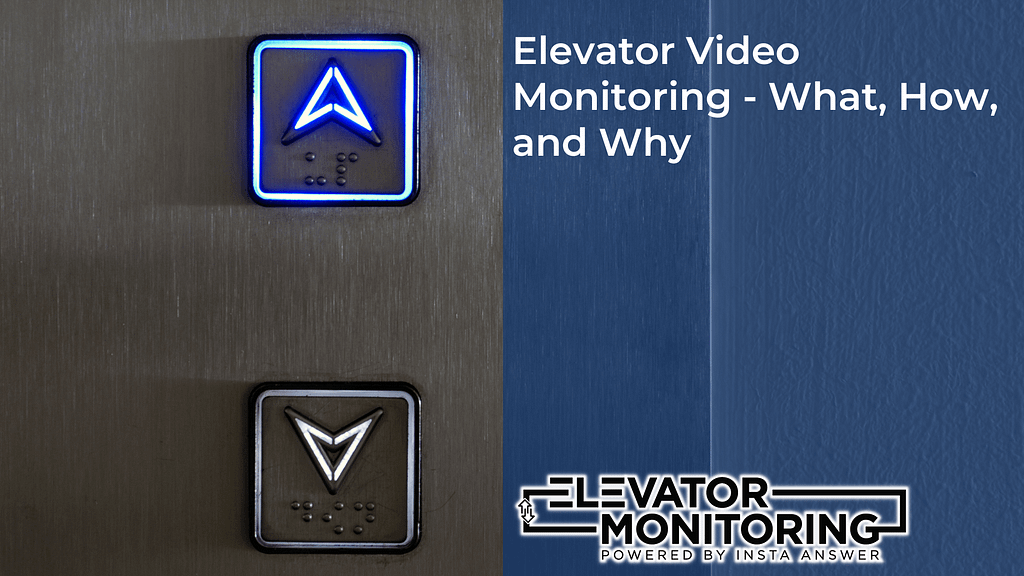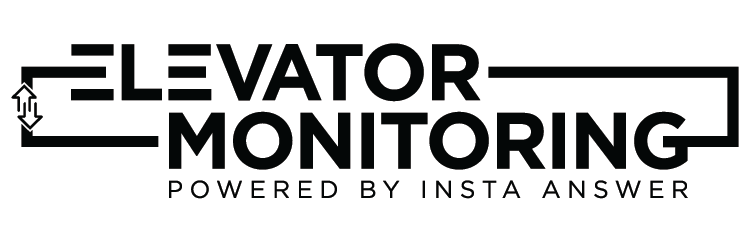Elevator Video Monitoring – What, How, and Why
Rather listen to the BlogCast for this post instead? Click the red YouTube play button below to hear it now.
Introduction
Elevator video monitoring has become an essential component of modern building management, offering improved security, legal safeguards, and operational effectiveness. As elevators remain one of the most frequently used parts of a building, ensuring their safety and functionality is a must. Not only does this technology provide a real-time view of activity inside elevators, but it also plays a vital role in preventing liability and responding to emergencies. With a carefully implemented elevator video monitoring system, building managers can anticipate challenges and take proactive measures to mitigate risks.
In this article, we’ll examine the details of elevator video monitoring—what it is, how it works, and why it’s essential for building owners and managers. From compliance with legal standards to improving tenant safety and satisfaction, we’ll explore the many reasons why this technology has become a critical component of today’s building infrastructure. It is our hope the insights provided in this post will help you make informed decisions about protecting your building and its occupants.
What is Elevator Video Monitoring?
Elevator video monitoring is the process of placing cameras inside and near elevators (and sometimes stairwells) that capture and record video footage. These cameras provide 24/7 surveillance, ensuring that any activity inside the elevator is recorded. Monitoring agents and managers can view this footage in real-time and/or store it for later review, depending on the system’s configuration. This continuous observation and recording acts as a deterrent against unwanted behavior and problems, which creates a safer environment for tenants and visitors alike.
Primarily, elevator video monitoring systems help to prevent criminal activity, such as vandalism or assault, and also offer a way for building managers to monitor incidents. The elevator monitoring system also provides crucial evidence in case of accidents or disputes. In commercial and residential buildings with high foot traffic, visual evidence of all elevator activity is a valuable security measure, which provides protection and accountability for everyone using the elevators. This makes the monitoring technology a must-have in today’s security landscape.

Elevator Video Monitoring Equipment
To set up an efficient elevator video monitoring system requires various pieces of hardware and equipment. This includes high-resolution cameras, recording systems, storage solutions, and monitoring stations (and monitoring agents). Elevator monitoring cameras are typically small, durable, and equipped with night vision to capture clear footage even in low-light conditions. High-definition video ensures that monitoring agents can clearly see any incident that occurs inside the elevator, helping to resolve disputes, monitor suspicious activity, and provide assistance in emergencies.
Many times, building management teams choose cloud-based storage solutions for ease of access and better security. These cloud storage systems offer scalability and allow for quick data retrieval when needed, and keep recorded footage safe from physical damage. Backup power supplies or generators are also important to ensure that cameras continue recording during power outages. More advanced setups even incorporate motion sensors or behavior recognition software that can trigger alerts if the system detects unusual activities, such as tampering or vandalism. These components all work together to ensure comprehensive surveillance that can adapt to various challenges.
How Does Elevator Video Monitoring Work?
An elevator video monitoring system consists of high-definition cameras, storage solutions (cloud or local), and a monitoring station and agents. These systems provide live streaming of video footage, as well as recordings for future access. Installers strategically place cameras inside the elevator to cover all angles, ensuring that nothing goes unnoticed. This total coverage offers maximum security and ensures that any incidents are properly recorded.
Modern elevator monitoring systems seamlessly integrate with a building’s overall security framework, allowing video feeds to be accessed by security personnel or monitoring agents at any time. Some more advanced systems can also trigger alerts when they detect certain behaviors, such as tampering or vandalism. The video footage is either stored on site or securely in the cloud, allowing managers and security personnel to retrieve and review footage as needed. According to the Security Industry Association, integrating video monitoring into broader building security systems can reduce response times by half, which is crucial in emergency situations.

The Process of Elevator Video Monitoring
In the event of an emergency, such as an entrapment or elevator failure, elevator video monitoring plays a central role in both assessing the situation and ensuring a timely response. To help you better understand how elevator video monitoring works, below is a step-by-step overview of how the process works in these situations:
Detection
The monitoring system captures live footage inside the elevator. If a malfunction, failure, or entrapment occurs, the monitoring system detects abnormal activities (e.g., sudden stops or distress signals from passengers). This immediate detection allows for quick intervention by monitoring agents, potentially preventing more serious issues from arising.
Automatic Alert
Many systems include automated alerts that immediately notify building management or security personnel when an incident occurs. Some systems also send alerts to emergency responders, depending on the severity of the situation. This ensures that the right people receive the alerts without delay, streamlining the entire process and allowing for a faster response.
Assessment
Security personnel or building managers have access to real-time video footage to assess the situation inside the elevator. This allows the monitoring team to determine the number of passengers involved, their condition, and the severity of the emergency. Proper assessment helps prevent panic and provides clarity on necessary actions.
Response Coordination
Once the monitory team assesses the situation, building management can coordinate with emergency responders. Monitoring agents can share video footage with paramedics, firefighters, or repair technicians, allowing them to prepare for the rescue or repair operation effectively. In emergency situations, this coordination is key in making sure the response is efficient and minimizes risks.
Communication with Passengers
Advanced monitoring systems can also relay messages to passengers inside the elevator, providing reassurance that help is on the way. This communication reduces anxiety among those trapped and helps guide and comfort them through the emergency until help arrives.
Incident Resolution
Monitoring agents continuously monitor live video footage inside the elevator until responders can resolve the situation. Once emergency personnel or repair technicians are on site, they use the live footage to inform their actions and ensure the safety of passengers and that the elevator is repaired promptly. After the situation is resolved, the recorded footage can be used for further review and to improve protocols and responses in the future.
Why is Elevator Video Monitoring So Important?
Elevator video monitoring offers substantial benefits for building owners – both practical and legal. One of the primary reasons to install monitoring systems is to ensure the safety of building tenants and visitors. Video monitoring also deters potential criminals, as the knowledge that they are being watched often prevents unwelcome behavior. This preventive measure not only protects building occupants but also reduces the risk of property damage within and around the elevator.
Furthermore, video footage can be instrumental in legal disputes. If an incident occurs, such as an injury or damage to property, video footage is evidence that provides a clear account of events. According to the Insurance Information Institute, video evidence can reduce litigation costs by as much as 22% in liability cases. Legal protection makes elevator video monitoring an essential asset for property managers and owners. With a reduced chance of costly lawsuits, building management can focus on maintaining a safe and secure environment.
Security Benefits of Elevator Video Monitoring
Because elevators are such confined spaces, security risks can easily arise. Therefore, video monitoring provides an extra layer of protection by discouraging criminal behavior, such as vandalism or physical altercations. Visible cameras act as a powerful deterrent to those who might otherwise want to engage in illegal activities, helping to keep the elevator environment secure.
For buildings with high traffic, such as office complexes, and residential apartments, maintaining safety in elevators is a must. Studies show that security cameras in public spaces reduce crime by up to 50%, making elevator video monitoring one of the most effective tools for improving building security. By helping to reduce crime in buildings significantly, elevator monitoring offers building owners peace of mind and helps create a safer environment for all occupants.

Legal Protection and Liability Mitigation
One of the most important benefits of elevator video monitoring is its ability to mitigate liability. In the event of an accident, dispute, or injury, video footage offers an impartial account of what happened. This aids in preventing costly legal battles and reduces liability exposure for building owners, allowing them to better focus on maintaining the property.
In jurisdictions where elevators must comply with specific safety codes (which is most), video monitoring may also be required by law. Non-compliance often results in fines or increased legal risk. According to the Building Codes Assistance Project (BCAP), many U.S. cities and states now require elevator monitoring as part of their building regulations for both commercial and residential properties. Compliance with these laws and regulations ensures that building management can meet regulatory obligations and protect themselves from lawsuits and legal challenges.
Helping with Entrapments and Elevator Stoppages
Elevator entrapments are rare; but when they occur, they are extremely stressful situations – especially for those stuck inside. Having real-time video monitoring allows building management teams to assess the situation immediately and ensure that those trapped inside receive prompt help. With over 20,000 elevator entrapment incidents reported annually in the U.S. (source: National Elevator Industry Inc.), video footage helps emergency personnel respond to incidents more efficiently. Often, early response means the difference between a smooth resolution and a prolonged ordeal.
Live elevator footage provides insight into the condition of passengers, which allows monitoring agents to coordinate with building managers and emergency responders more effectively. In cases of distress, enabling agents to see what’s happening inside the elevator helps to greatly reduce passenger anxiety and expedite rescue operations. In these cases, quick action can also prevent further damage or injury, minimizing the negative impact of the incident.
Preventing Future Elevator Malfunctions
Besides being very useful in emergencies, elevator video monitoring is also a proactive maintenance tool. Reviewing footage of malfunctions or unusual behavior in the elevator helps building staff identify recurring issues and take preventive action. Preventive maintenance helps to minimize future breakdowns and ensure that elevators always remain in good working order, reducing both inconvenience and potential safety risks.
Proactive maintenance supported by video monitoring can also reduce overall downtime considerably. According to FacilitiesNet, using video footage to identify equipment issues before they escalate helps extend the lifespan of elevator systems by up to 15%. This makes video monitoring not just an investment not just in safety, but one in long-term operational efficiency, which saves costs and helps prevent major disruptions.
Tenant Satisfaction with Elevator Video Monitoring
For most tenants, safety is a top priority, and video monitoring can provide peace of mind for everyone using the building. Knowing that their elevators are monitored around the clock reassures tenants that their safety is a priority, improving their overall experience in the building. When tenants feel safe and secure, they are much more likely to renew their leases and remain long-term occupants, creating financial stability for property owners.
A Kingsley Associates survey shows that 80% of tenants consider security measures like video monitoring to be a key factor when choosing where to live or work. Consequently, installing elevator video monitoring helps building owners improve tenant retention rates and attract new renters. Satisfied tenants contribute to a positive reputation for the building, which leads to higher occupancy rates and fewer vacancies.
Cost Efficiency of Elevator Video Monitoring
Although installing a video monitoring system for your building does require an initial upfront investment, the long-term savings and benefits are significant. For instance, monitoring systems help prevent costly incidents like vandalism or accidents that often result in legal fees or insurance claims. Consider that repairing an elevator damaged by vandalism can cost upwards of $10,000 per incident (according to the National Apartment Association). As you can see, preventing these issues through video surveillance saves both time and money.
As mentioned above, having recorded footage available can prevent disputes from escalating into costly litigation, which can result in even greater savings. Over time, these significant savings offset the initial cost and investment of installing the monitoring system, making it a financially sound decision for building managers and owners. Elevator video monitoring proves to be a cost-effective investment when weighed against the potential costs of equipment damage or legal issues.
Integration with Other Building Security Systems
Elevator video monitoring systems perform best when integrated with other building security systems, such as access control and emergency alarms. By connecting the monitoring system with other security measures, building owners provide occupants and guests with a more comprehensive approach to safety. This comprehensive integration allows for faster, more coordinated responses to emergencies and ensures there are no gaps in security.
For example, if there is an emergency, such as a fire, the video monitoring system can trigger an automatic shutdown of the elevators and provide footage to emergency personnel. Industry research shows that integrating video monitoring with other systems can reduce security breaches by over 60%, making it a powerful, and critical, component of an overall security strategy. By combining elevator monitoring with these other tools, building owners create a safer, more resilient security infrastructure that benefits everyone involved.
Legal Compliance
In many cities and states, laws and regulations mandate elevator video monitoring, particularly in commercial and residential buildings. And, non-compliance usually results in fines or increased liability risks, which is why it’s essential for building owners to ensure they are following local regulations pertaining to elevator monitoring. Moreover, failure to follow these requirements often leads to financial penalties and increased insurance premiums.
Elevator video monitoring also helps buildings comply with safety code and standards, reducing the risk of accidents and ensuring legal compliance. The Building Codes Assistance Project reveals that elevator surveillance regulations are growing, especially in urban centers where the safety of tenants and visitors is a primary concern. Compliance with these regulations not only protects the building owner but also shows a commitment to occupant safety and building integrity.
Choosing the Right Elevator Video Monitoring System Provider
When it comes to selecting the right video monitoring system provider for your building, there are several important elements to consider. First, search for a provider that offers high-definition cameras with night vision capabilities to ensure that video footage is clear, regardless of lighting conditions. Cloud storage options are also essential, as they allow for easier access to recordings and reduce the risk of data loss. Clear archive footage is also essential for resolving disputes or reviewing incidents accurately.
When choosing a system, make sure it complies with all legal requirements in your area and provides remote access capabilities. Security Today advises that mobile access is an essential feature, enabling building managers and monitoring teams to view elevators from their devices in real-time, whether they’re in the building or on the other side of the country. This flexibility allows managers and monitoring agents to stay informed and respond quickly to any issues, no matter where they are.
Conclusion
These days, elevator video monitoring is an essential component of modern building management. It offers many far-reaching benefits, from increased security to improved emergency response times and reduced legal risks. With the right monitoring system in place, building managers provide tenants, visitors, and staff a safer, more efficient environment. Whether your property is commercial or residential, investing in an elevator video monitoring system will always pay dividends in terms of safety, liability prevention, and operational efficiency.
Partner with ElevatorMonitoring.net Powered by Insta Answer
For over 50 years, Insta Answer has been at the forefront of providing advanced elevator video monitoring solutions for buildings of all sizes all over North America. To equip your elevators with the best video monitoring systems available and provide your occupants with the safety and security they deserve, partner with ElevatorMonitoring.net Powered by Insta Answer. Contact us today at 1-877-631-9711 or via email at [email protected] for a no-cost, no-obligation consultation and to learn how we can help protect your property and its occupants.













